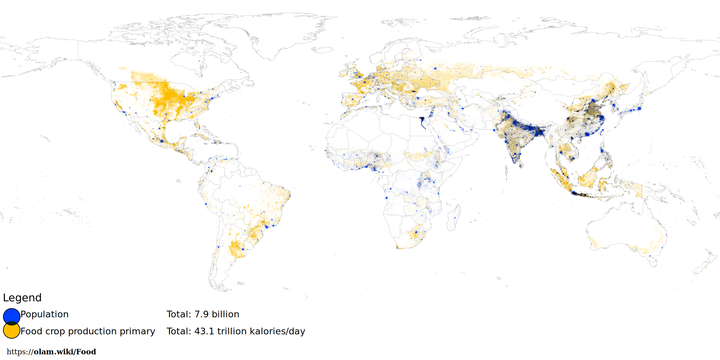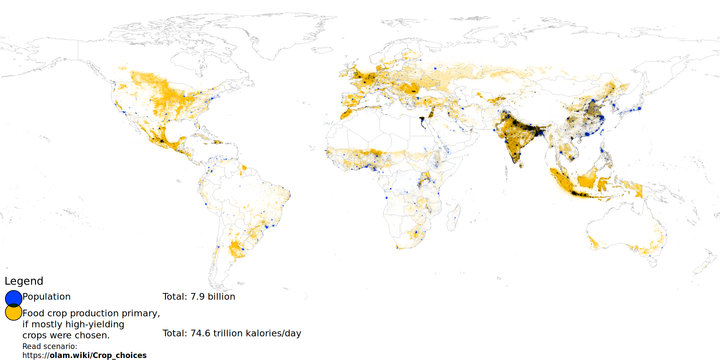Crop choices
One way to increase crop yields is to simply grow different crops.
In this scenario, the global food supply could be nearly doubled. Africa, in particular, could produce 3 times as much food as it currently does. This would probably help a lot in ending global hunger.
People would have to get used to different foods - or at least different ingredients. More on this later.
Scenario overview
Every country would grow a mix of its best-yielding crops. This varies tremendously by region.
The whole chart can be found here. Note: it's a big page and may be slow to load.
Today's major crops are corn, soy and wheat (this is the "before").
But in the new scenario ("after"), the top crops include cucumbers, tomatoes, garlic, and other vegetables. While these don't seem like high-calorie foods, the sheer volume of them actually provides more calories than today's food supply. Now I don't think it's possible to eat that many vegetables raw - but they could probably be dried and processed into flour for baked goods etc, like how wheat and corn are today.
FAQ
Q: Food production is already so high - 5000 kalories per day per person? Why would you want to increase it more?
A: These numbers represent primary food production - in other words, how much food there is immediately after crop harvest. Most of this food later gets lost, wasted, or fed to animals. This can be solved too, with the help of plant-based food and/or food waste reduction. There are many paths to feeding the world.
Q: Why is ranking only based on protein and calories?
A: It's true that humans need a lot more than just protein and calories. We also need vitamins, minerals, fiber, and omegas (3 and 6). But in a world where farm land is scarce
- Nearly every crop in its natural form contains some vitamins and minerals.
- If there are any missing nutrients, then (worst-case) they can be supplemented/fortified with almost zero land footprint.
- There doesn't seem to be a lot of missing nutrients when all crops are combined (see nutrition calculator links).
- There is almost always an overabundance of fibre in crops. There are parts of plants we don't eat because they are so fiberous.
- Omegas 3 & 6 might be a genuine concern, and we should analyze this too. The next version of the nutrition calculator will track these.
Nutrition calculator links
The links below show the crops as foods in the nutrition calculator.
Food per day, per capita:
| World: | before | after |
| Africa: | before | after |
| Asia: | before | after |
| Europe: | before | after |
| North America: | before | after |
| Oceania: | before | after |
| South America: | before | after |

